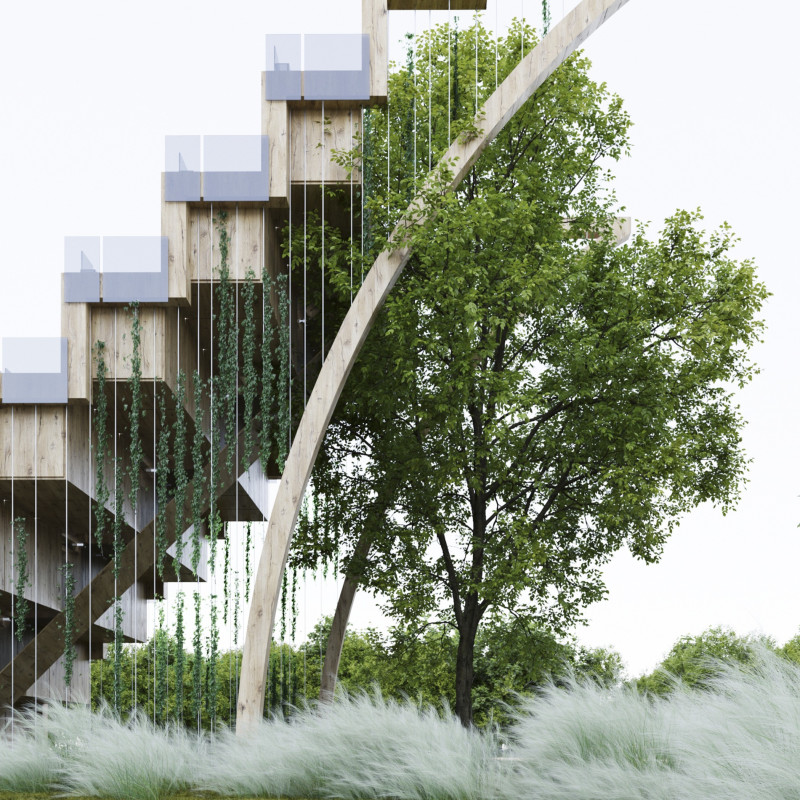5 key facts about this project
At its core, this project serves a dual purpose: providing functional spaces for its users while enhancing the aesthetic qualities of the environment. The architectural design reflects thoughtful planning, with an emphasis on accessibility and sustainability, addressing the needs of its occupants while minimizing its ecological footprint. This emphasis on functionality ensures that the space can adapt over time, accommodating diverse uses and evolving community demands.
The external façade of the building is a well-considered blend of materials that serve both structural and aesthetic purposes. Faced with natural stone, glass, and steel, the architecture presents a cohesive appearance that resonates with its surroundings. Natural stone provides durability and a sense of permanence, connecting the structure to the earth. Meanwhile, large glass panels facilitate natural light to permeate the interior, creating a warm, inviting atmosphere. The use of steel elements introduces a modern twist, showcasing the capability for innovative construction techniques while maintaining structural integrity.
Inside, the architectural plan focuses on maximizing functionality and flow. Open-concept areas allow for flexibility in use, encouraging interaction among occupants. The layout consists of distinct zones that serve various purposes, from quiet spaces for contemplation to collaborative environments that promote teamwork. Careful attention has also been given to acoustics and natural ventilation throughout the design, enhancing user comfort and wellbeing.
Unique to this project is its focus on biophilic design principles, integrating natural elements within the built environment. Features such as green walls, indoor gardens, and strategically placed outdoor terraces incorporate nature into the daily lives of the users. This design philosophy not only fosters a connection to the natural world but also promotes emotional health, productivity, and overall quality of life for the occupants.
Lighting plays a pivotal role in the architectural design, with an emphasis on creating different atmospheres within the various spaces. The strategic placement of windows and skylights ensures that ambient light fills the interiors throughout the day. As night falls, integrated lighting solutions highlight architectural details while providing safety and comfort, showcasing the design's versatility.
Furthermore, the project embodies a strong commitment to sustainability through the incorporation of energy-efficient technologies and materials. Sustainable practices such as rainwater harvesting systems, solar panels, and high-efficiency HVAC systems reduce energy consumption and promote environmentally responsible building practices. This approach not only benefits the environment but also results in long-term operational cost savings for the stakeholders.
The architectural sections reveal innovative structural solutions, demonstrating the interplay between aesthetic choices and engineering considerations. The project uses advanced construction techniques that minimize waste and optimize resource use, all while adhering to rigorous safety and performance standards. These elements underscore a responsible approach to modern architecture, where environmental and social responsibilities are prioritized.
In essence, this architectural design project represents an articulate dialogue between people, nature, and the built environment. It stands as a testament to innovative architectural ideas, reflecting a progressive vision while remaining responsive to community needs. The careful considerations in material selection, space planning, and sustainable practices highlight the project’s commitment to excellence in design and execution. For those interested in a deeper exploration of the project, reviewing the architectural plans, sections, and designs will provide valuable insights into its conceptual framework and execution. Engage with the elements of this architectural endeavor to appreciate the nuances that contribute to its overall effectiveness and appeal.


 Maksim Kuzura
Maksim Kuzura 




















